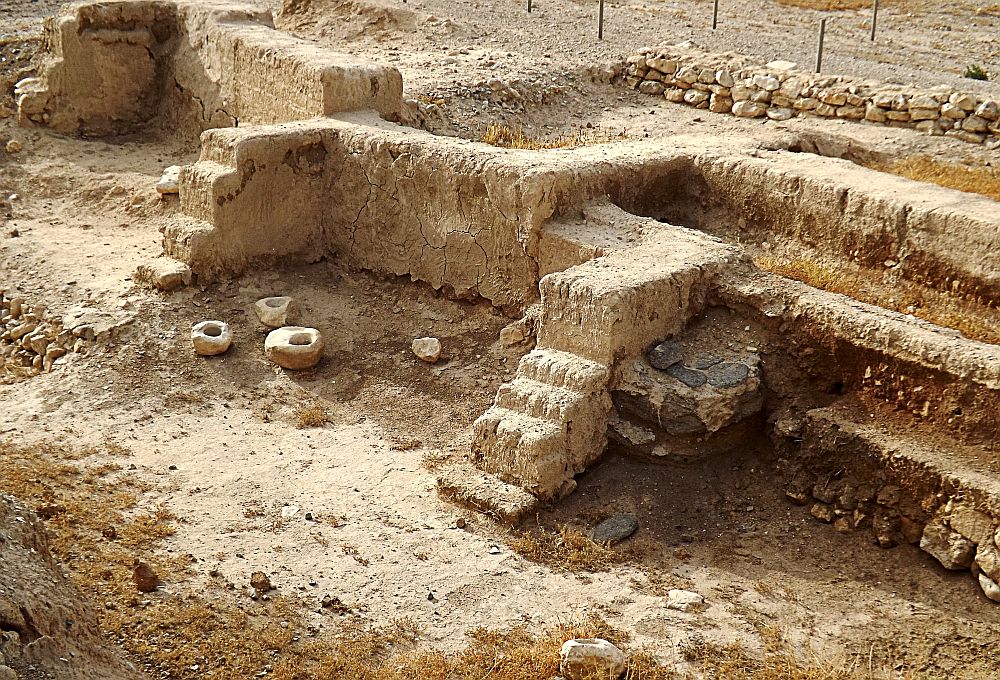
[Image above] Photographs and SEM images of color pigment admixtures used in a recent study of colored concrete: red (a, d), blue (b, e), and green (c, f). Credit: Heerah et al., Case Studies in Construction Materials (CC BY-NC-ND 4.0)
For anyone who visits Columbus, Ohio, the LeVeque Tower is an immediate eye-catcher as one of the tallest and historically rich buildings in the city. Yet as much as LeVeque is celebrated for its Art Deco-style architecture, another building featuring historically rich architecture is often derided instead—the Ohio History Center.
The Ohio History Center is a premier example of Brutalist architecture in the United States. Brutalism focuses on minimalist constructions that showcase the bare building materials and structural elements over decorative design.
When the Center originally opened in 1970, architects lauded the structure as bold and imaginative. Nowadays, many people view the structure as an ugly, giant brown box.

The Ohio History Center in Columbus, Ohio, is a great example of Brutalist architecture. Credit: Sebastian Wallroth, Wikimedia (CC BY 4.0)
Brutalism and concrete are often entwined in many people’s minds, and the idea of concrete as anything but a massive, monolithic, and “blocky” building material can be difficult to imagine. However, there are many architects who specialize in bringing concrete structures to life, such as through the use of colored concrete.
Concrete can be colored in a variety of ways, including through staining, dyeing, and integral color, which is when pigment is blended into the cement. Integral color is one of the most popular methods for coloring newly placed concrete, and the video below explains some of the considerations that go into using integral color.

Credit: Concrete Network, YouTube
Many integral pigments are made from metal oxides, such as iron oxide. And while achieving the desired color with integral pigments is a main concern for manufacturers, it is also important to consider how the pigments may affect other properties of the cement as well—just like one recent open-access study did.
The researchers come from Xi’an Jiaotong-Liverpool University (China) and Mohammed VI Polytechnic University (Morocco). They wanted to explore how pigment may affect the physical, chemical, and mechanical properties of cement. To do so, they characterized several cementitious mixes produced with three different color pigments (red iron oxide, blue cobaltous aluminate oxide, and green chromium oxide) and two types of cement (Portland cement and Portland-slag with fly ash blended cement).
They found that while the blue and red pigments did not significantly affect the concrete’s water absorption and porosity, samples containing the green chromium oxide pigment showed a drastic increase in these properties with rising pigment content, independently of the cement used.

Water absorption and porosity results for the different cementitious mixes. Samples containing the green chromium oxide pigment significantly affected the properties, independently of the cement used. Credit: Heerah et al., Case Studies in Construction Materials (CC BY-NC-ND 4.0)
Likewise, while the blue and red pigments did not significantly affect the concrete’s compressive strength, the green pigment did.

Flexural and compressive strength results for the different cementitious mixes. Samples containing the green chromium oxide pigment significantly affected the strength, independently of the cement used. Credit: Heerah et al., Case Studies in Construction Materials (CC BY-NC-ND 4.0)
In a Xi’an Jiaotong-Liverpool University press release, the researchers explain that the chemical method used to produce the chromium oxide is the reason for these findings.
When muscovite, a mineral used to produce green pigment, is hydrated with cement, “muscovite generated significant quantities of a component that causes excessive porousness, which results in a reduction in strength and longevity,” the press release explains.
“However, other studies have found that there is no adverse effect when using green pigment consisting solely of chromium (III) oxide, with no muscovite,” says lead author Mehreen Z. Heerah, a graduate of Xi’an Jiaotong-Liverpool University’s Department of Civil Engineering.
Thus, the researchers conclude that “The content and purity of the pigment should be studied before using in cementitious mixes as it can have adverse effect on the properties of samples.”
The open-access paper, published in Case Studies in Construction Materials, is “Characterisation and control of cementitious mixes with colour pigment admixtures” (DOI: 10.1016/j.cscm.2021.e00571).
Author
Lisa McDonald
CTT Categories
- Cement
- Construction
Related Posts
The urban fabric of brick—Part 3: Innovations and the future of design
November 11, 2025
The urban fabric of brick—Part 2: Ancient brick history
October 28, 2025


